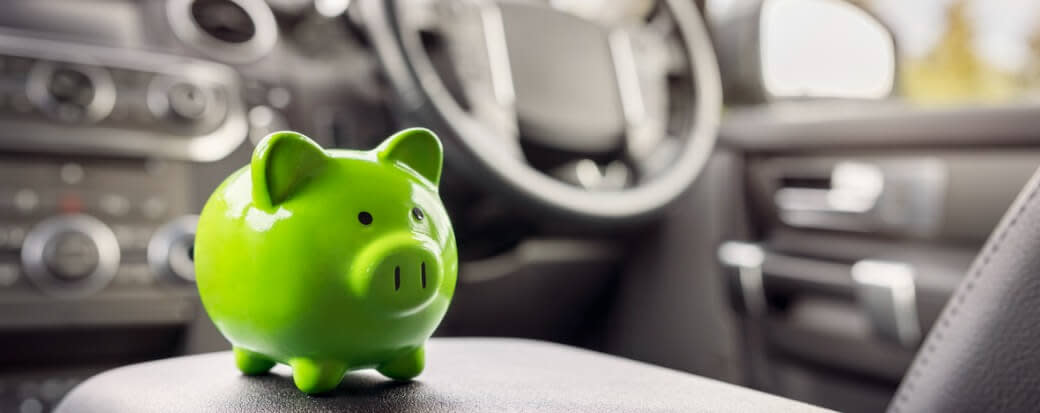Is It Possible to Use a Car as Collateral for a Personal Loan?

Using a car as collateral for a personal loan can be a viable option for borrowers who need access to funds and own a vehicle with sufficient equity. This type of secured loan may offer lower interest rates than unsecured loans, but it also comes with the risk of repossession if payments are not made.
When considering using a car as collateral for a personal loan, it’s important to weigh the pros and cons, and consider other financing alternatives, as well. Here’s what you need to know.
How Does Personal Loan Collateral Work?
When you apply for a secured personal loan, you use an asset for collateral. If you fail to repay the loan, the lender can take possession of the asset. The item you use for collateral must be valuable enough that the lender will accept it to take on the risk of lending you money.
When you use a car or another valuable item for collateral, the lender will look at the value of the item to help decide whether to approve you for a loan. If you get approval, the lender will then determine how much money you will be approved for and what your personal loan interest rate will be.
The value of your collateral, as well as your credit history, credit score, and income will help determine the loan terms you get. If you don’t make your loan payments, you may default on your loan and the lender could take possession of your collateral.
What Does the Value of a Car Need to Be to Use It as Collateral for a Personal Loan?
You must have equity in the car to use it as collateral for a personal loan. Equity is the difference between the value of the car and what you still owe on it. For example, if your car’s resale value is $12,000 and you owe $2,000 on your car loan, you have $10,000 of equity in the car. The more equity you have in the car, the lower the interest rate you will typically be offered for a personal loan.
Pros of Using a Car as Collateral for a Personal Loan
There are advantages to using a car as collateral for a personal loan, including lower interest rates and easier requirements.
Interest Rates
Secured loans typically have lower interest rates than unsecured loans. Interest rates for secured loans may start as low as 4%, depending on your creditworthiness and other factors. By comparison, interest rates for unsecured loans start at about 6%.
Personal Loan Requirements
Another benefit of using a car as collateral for a personal loan is that it can make it easier to qualify for a loan. The personal loan requirements for a secured loan are generally more attainable than they are for an unsecured loan. That’s because with your car as collateral, the lender takes on less risk.
Recommended: Personal Loan Tips That Can Help You Get Approved
Cons of Using a Car as Collateral for a Personal Loan
Using your car as collateral for a personal loan has risks and downsides, as well. These are two of the biggest disadvantages.
Upside-Down Personal Loan
Using a car as collateral for a personal loan has the risk of making the loan upside down. An upside down loan is when you owe more than your car is worth, meaning that you have negative equity in the car. By taking out the loan, you’re adding to the amount of money you already owe, which could turn the loan upside down.
Get Your Car Repossessed
If you don’t make your loan payments, the lender could repossess your car. In addition to losing your car, there will likely also be a negative impact on your credit score, causing it to drop.
Recommended: Guide to Loans for Car Repairs
Other Collateral That Can Be Used for Personal Loans
It is important to know what can be used as collateral for a personal loan. Here are some of the different types:
Savings
Some personal loans let you use savings accounts as collateral. Share secured loans and passbook loans are two examples of personal loans that use your savings account as collateral.
Assets
In addition to your car, other assets like your home, jewelry, fine art, boats, and antiques can also be used as collateral for personal loans.
Life Insurance Policies
If you have a life insurance policy, you can use it as collateral for a loan. If you default on your loan, the lender could collect on the cash value of the policy.
The Takeaway
It’s possible to use your car as collateral for a personal loan, but it may not be the best option. You could lose your car if you fail to repay the loan. There are other assets you might want to consider as collateral for a personal loan instead, such as jewelry or antiques, for instance.
When exploring personal loans, it’s wise to shop for the best rates and terms. Lantern by SoFi makes the process easier by providing you with offers from multiple lenders all in one place. Just fill out one simple form and you can conveniently compare personal loan options available to you.